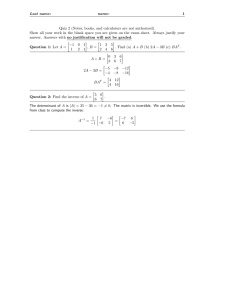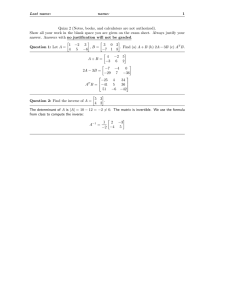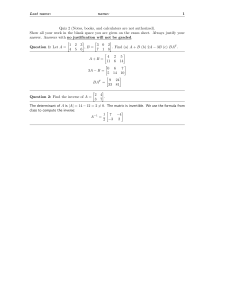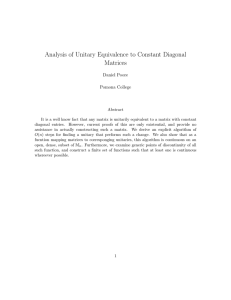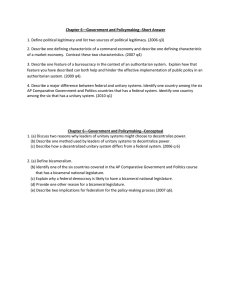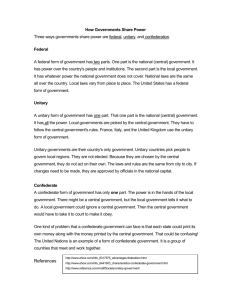Part I (50 points)
advertisement
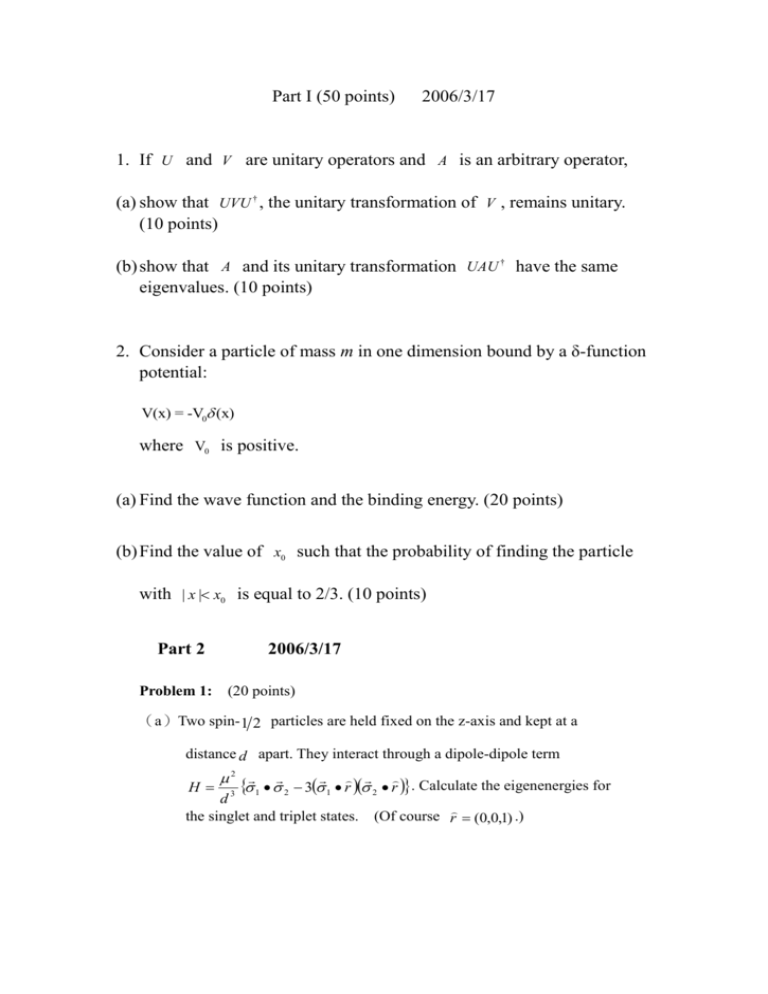
Part I (50 points) 2006/3/17 1. If U and V are unitary operators and A is an arbitrary operator, (a) show that UVU † , the unitary transformation of V , remains unitary. (10 points) (b) show that A and its unitary transformation UAU † have the same eigenvalues. (10 points) 2. Consider a particle of mass m in one dimension bound by a δ-function potential: V(x) = -V0 (x) where V0 is positive. (a) Find the wave function and the binding energy. (20 points) (b) Find the value of x0 such that the probability of finding the particle with | x | x0 is equal to 2/3. (10 points) Part 2 2006/3/17 Problem 1: (20 points) (a) Two spin- 1 2 particles are held fixed on the z-axis and kept at a distance d apart. They interact through a dipole-dipole term H 2 1 2 31 r 2 r . Calculate the eigenenergies for 3 d the singlet and triplet states. (Of course r (0,0,1) .) 1 0 (b) If at time t 0 the spin function is , through what interval 0 1 1 2 0 1 of time will the spin function become ? 1 1 0 2 Problem 2: (20 points) Use the relation for the angular momentum operators and states J j, m j ( j 1) m(m 1) j, m 1 to find the absent Clebsch-Gordon coefficients in the following table ( j1 J 2 2 m1 m2 M 2 1 1 1 0 1 0 0 0 1 0 1 -1 0 0 0 0 0 0 -1 1 0 0 j2 1) 1 2 1 0 0 0 0 0 0 0 0 1 0 0 0 0 0 0 0 0 0 Problem 3: (10 points) A plane electromagnetic wave propagating in the z-directon can be described by a vector potential field A( x, t ) ( Ax , Ay ,0)e ikzit . Argue that the photon has spin s 1 and helicity ms 1 . (Hint: Consider the combination A Ax iA y .) Quantum Mechanics Part III 2006/3/17 1. Prove the Thomas-Reiche-Kuhn sum rule ( En En ) n x n n where n and Eliminate the n 2 ( En En ) n x n n x n n are eigenstates of E n E n H 2 2m p2 V ( x) . 2m factor in favor of H.) (Hint: 25 points 2. Show that any matrix that commutes with is a multiple of unit matrix. 25 points



